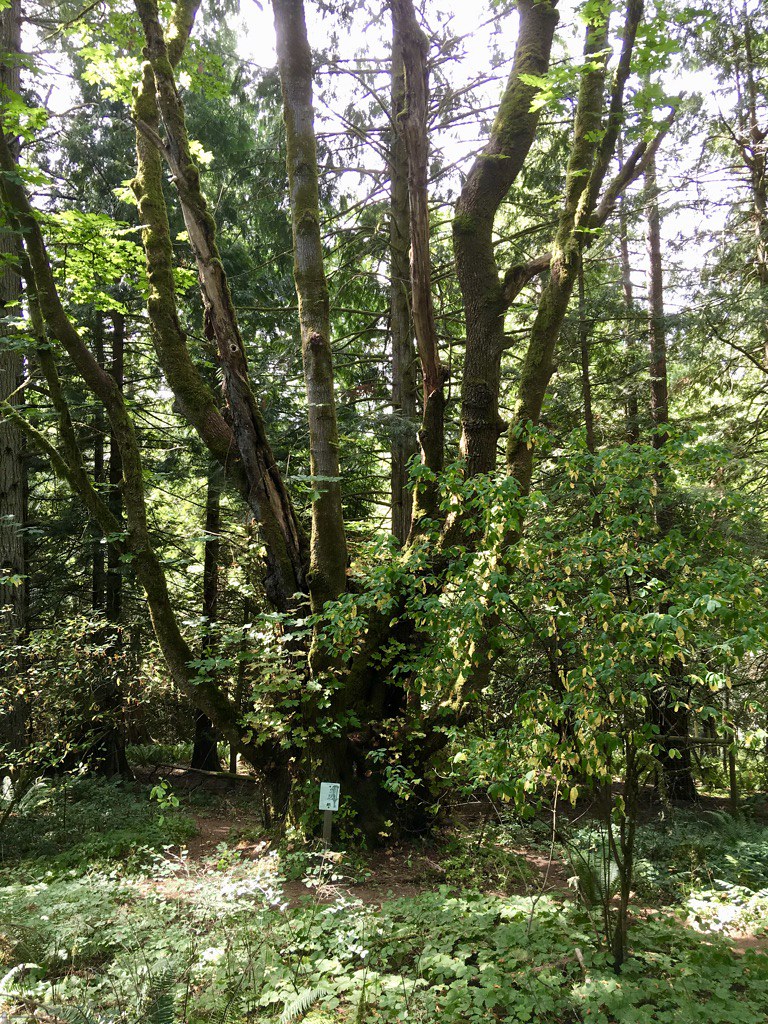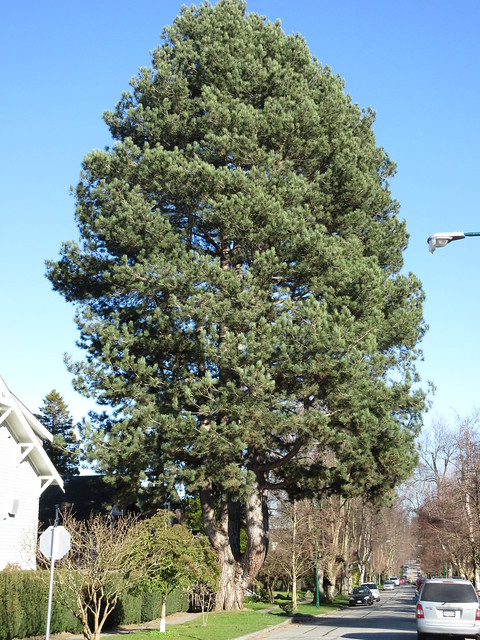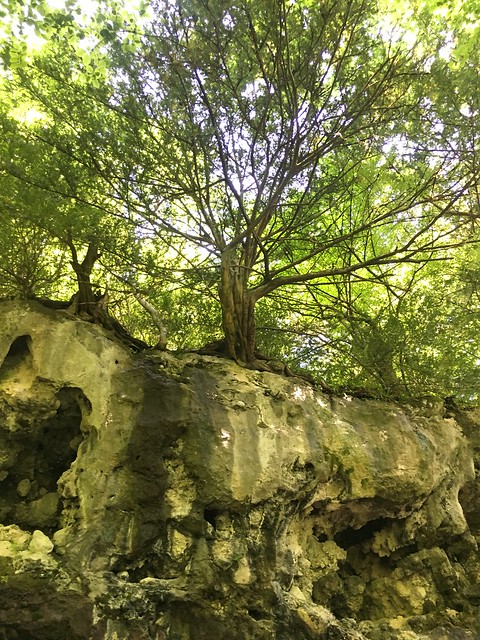Trees we liked this summer
Summer is wrapping up and the Aitken lab is getting back to classes and lab meetings and all the regular routine of fall term. We spent our summer watering trees in the greenhouse, presenting at conferences, trekking around the field, and taking quiet vacations. Where ever we went, we found trees that delighted and soothed us. Here are a few of our favourites –
Susannah –
While wandering around Eves Provincial Park near Duncan, I came across the biggest bigleaf maple I’ve ever seen. The sign claimed it was the biggest maple in all of Canada. I’m not sure about that, but it was very impressive. When trying to verify the claim, I found there are 4 giant bigleaf maples in Stanley Park – practically in my backyard. Guess I know what I’m going to be looking for on my Stanley Park walks this fall! One of the things I love about bigleaf maple are how many epiphytes they support – their bark is just covered with mosses, lichens, liverworts, and ferns.

Beth –
Bristlecone pine: wilderness survival expert
This is a Great Basin bristlecone pine tree (Pinus longaeva) from the protected Ancient Bristlecone Pine Forest in the Inyo National Forest of California. The trees in this forest are some of the oldest on the planet; the oldest living tree is estimated to be over 5,000 years old. They achieve these great ages by growing extremely slowly; an inch of diameter growth can take up to 100 years. Their needles can persist for over 40 years (the longest lasting of any plant). As they age, portions of cambium die, leaving only narrow strips of active vascular tissue and bark, leading to their characteristically gnarled growth form.
Pia –
My favourite neighbourhood tree: a large multi-stemmed pine on 14th and Trimble. It’s on my way to the swimming pool. Unfortunately, I don’t know the species.
ID anyone?
Sally –
European yew (Taxus baccata) on Mt. Olympus in Greece. Yews are rare in Greece as they are toxic to livestock and farmers cut them down, but this population survived because it is near a monastery.
Iain –
This summer took me from Waterton to Jasper and everywhere in between helping complete health surveys of permanent whitebark and limber pine plots. Whitebark and limber pine continue to decline throughout their ranges mainly due to the introduced pathogen Cronartium ribicola causing the disease white pine blister rust, but also from mountain pine beetle, fire suppression and subsequent encroachment of lower elevation species, and climate change. Started in 2003 by Parks Canada, these permanent plots are surveyed every 5 years to assess the condition of whitebark and limber pine in the Canadian Rocky and Columbia Mountains. Lucky for me, I was able to help with the 2019 surveys while working for Parks Canada and travel to remote parts of these mountains to assess the endangered trees. I can safely say it was the most physically exhausting road trip I have been on!
Whitebark pine by Iain Reid
Rafa –
Saying goodbye to my little Douglas-fir babies – this was the last picture I took from my experiment at Totem Field before cutting the plants down two weeks ago for biomass measurements.
It was quite a close and intense interaction with these plants since they were sowed in May 2017. Many and many assessments for phenology, height and cold hardiness.




